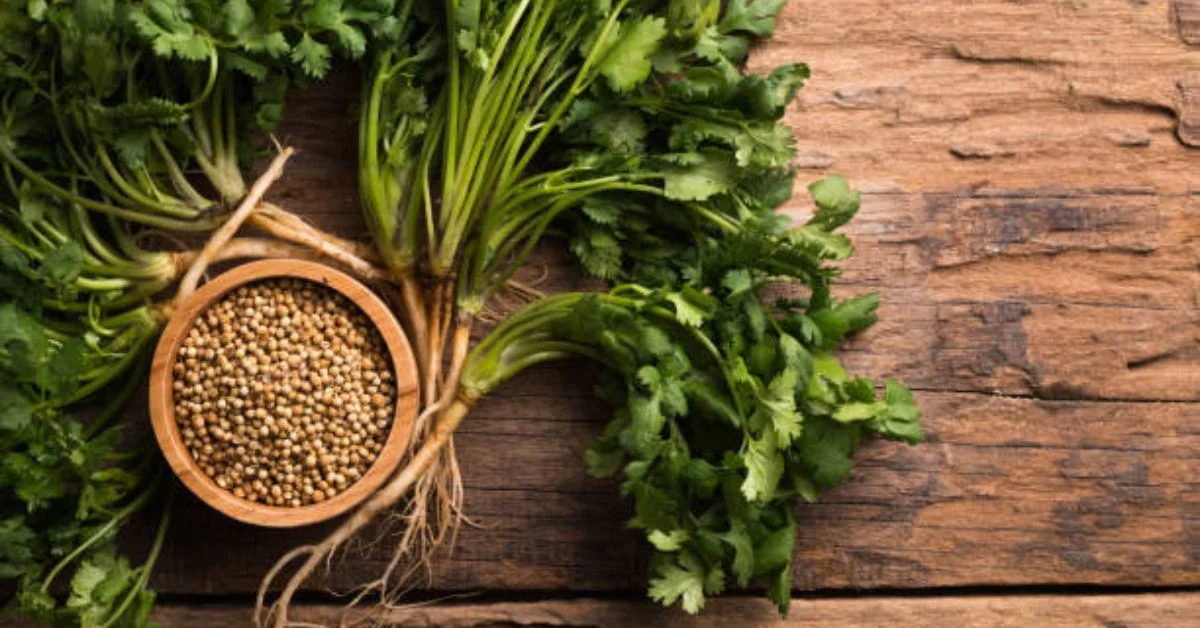The herb commonly known as koriandri is one of the oldest and most versatile plants cultivated by humans. Known in English as coriander and referred to as cilantro in some regions, koriandri holds a unique place in both culinary traditions and medicinal practices worldwide. Its reputation comes not only from its distinctive flavor and aroma but also from its ability to provide nourishment, healing, and cultural symbolism.
Unlike many herbs that are valued for only one part of the plant, koriandri is exceptional because every part—leaves, stems, seeds, and even roots—finds use in some culture or tradition. This makes it an all-encompassing plant that bridges the gap between food and medicine.
This article provides a detailed journey into koriandri, covering its history, nutritional profile, health benefits, culinary versatility, agricultural importance, cultural role, and modern applications.
Origins and Historical Context of Koriandri
Koriandri has been cultivated for thousands of years, with references found in ancient civilizations such as Egypt, Greece, and India. Archaeological findings show koriandri seeds placed in Egyptian tombs, suggesting its role in both ritual and diet. In traditional Indian Ayurvedic texts, koriandri was described as a cooling herb that balances digestion and soothes the body.
Throughout history, koriandri spread across continents due to trade and migration. Merchants valued it as a spice for food preservation and as an aromatic flavor enhancer. Over time, it became a staple in Middle Eastern, Asian, European, and Latin American cuisines. Today, it is one of the most globally recognized herbs, both fresh and dried.
Botanical Characteristics
Koriandri (Coriandrum sativum) is an annual herb belonging to the Apiaceae family, the same family as parsley, celery, and fennel. It grows between 30 to 60 cm tall, with slender stems and bright green, lacy leaves. The flowers are small, pale pink or white, grouped in clusters. The plant eventually produces small round seeds, which are aromatic and used as a spice.
Key Features:
- Leaves: Soft, fragrant, and used fresh in cooking.
- Seeds: Round, golden-brown, and used dried or ground as a spice.
- Roots: Strong in flavor, often used in Southeast Asian cooking.
- Growth: Prefers cool climates but adapts to diverse environments.
This all-round utility makes koriandri not just a spice but a complete plant resource.
Nutritional Profile of Koriandri
One of the most celebrated aspects of koriandri is its nutritional density. Both the leaves and seeds contain valuable vitamins, minerals, and antioxidants.
Table 1: Nutritional Composition of Fresh Koriandri Leaves (per 100g)
| Nutrient | Amount | Role in Health |
|---|---|---|
| Calories | 23 kcal | Very low energy, ideal for healthy diets |
| Carbohydrates | 3.7 g | Provides natural energy |
| Protein | 2.1 g | Supports growth and tissue repair |
| Fat | 0.5 g | Negligible, heart-healthy profile |
| Fiber | 2.8 g | Improves digestion and gut health |
| Vitamin C | 27 mg (45% DV) | Boosts immunity and skin health |
| Vitamin K | 310 µg (260% DV) | Essential for blood clotting and bone strength |
| Vitamin A | 675 µg (75% DV) | Supports vision and immune system |
| Potassium | 521 mg | Regulates blood pressure and heart function |
| Calcium | 67 mg | Maintains strong bones and teeth |
| Iron | 1.8 mg | Supports red blood cell production |
| Magnesium | 26 mg | Helps muscle and nerve function |
Table 2: Nutritional Composition of Koriandri Seeds (per 100g)
| Nutrient | Amount | Role in Health |
|---|---|---|
| Calories | 298 kcal | Provides energy from natural oils |
| Carbohydrates | 54 g | Complex carbs, long-lasting energy |
| Protein | 12 g | High in plant-based protein |
| Fat | 17 g | Rich in healthy oils (oleic and linoleic acids) |
| Fiber | 41 g | Excellent digestive support |
| Calcium | 709 mg | Strong source of bone-supporting mineral |
| Iron | 16.3 mg | Excellent for blood and oxygen circulation |
| Magnesium | 330 mg | Boosts metabolism and reduces muscle cramps |
| Phosphorus | 409 mg | Supports cellular repair and metabolism |
| Antioxidants | Polyphenols, oils | Protects cells from oxidative stress |
Thus, koriandri is a nutritional powerhouse, offering low-calorie freshness in leaves and energy-rich oils in seeds.
Health Benefits of Koriandri
Koriandri is widely celebrated not only for its taste but also for its health-promoting properties.
1. Digestive Support
The seeds are traditionally used as a digestive aid, reducing bloating, indigestion, and nausea. Their fiber content supports gut flora.
2. Blood Sugar Regulation
Modern studies indicate koriandri may help regulate blood sugar by enhancing insulin activity, making it valuable for diabetic-friendly diets.
3. Anti-Inflammatory Properties
Rich in antioxidants and essential oils, koriandri reduces inflammation, supporting joint health and protecting against chronic diseases.
4. Heart Health
With potassium, magnesium, and antioxidant oils, koriandri supports healthy blood pressure and lowers cholesterol.
5. Detoxifying the Body
Coriander leaves are known for their chelating properties, believed to help the body eliminate heavy metals and toxins.
6. Immune Boost
High vitamin C and antioxidants make koriandri a natural immunity enhancer.
7. Skin and Hair Benefits
Topical application of koriandri extracts is used for acne relief, soothing irritation, and promoting healthy hair.
Culinary Uses of Koriandri
Koriandri is one of the few plants where every part is edible and valued in global cuisines.
Leaves (Fresh Cilantro)
- Used in chutneys, salsas, curries, and salads.
- Popular garnish in soups, stir-fries, and rice dishes.
- Adds freshness and a citrusy note.
Seeds (Coriander Spice)
- Used whole in pickles, spice blends, and marinades.
- Ground seeds are key ingredients in curry powders and masalas.
- Provide warm, nutty, lemony flavor.
Roots
- Used in Thai and Southeast Asian cooking, especially for curry pastes.
- Intense flavor base for broths and soups.
Table 3: Global Culinary Uses of Koriandri
| Region | Koriandri Use | Example Dish |
|---|---|---|
| India | Seeds in spice blends, leaves in chutneys | Coriander Chutney, Curry |
| Mexico | Fresh leaves in salsa, tacos, soups | Pico de Gallo, Tortilla Soup |
| Thailand | Roots in curry pastes, leaves as garnish | Tom Yum Soup, Green Curry |
| Middle East | Seeds in bread and stews, leaves in salads | Falafel, Tabbouleh |
| Europe | Seeds in pickles, sausages, baked goods | Rye Bread, Pickled Vegetables |
Cultivation and Farming
Coriandri is relatively easy to cultivate and is grown both commercially and in home gardens.
Growing Requirements:
- Climate: Prefers cool weather; grows well in spring and autumn.
- Soil: Well-drained, fertile soil with pH 6.2–6.8.
- Watering: Requires moderate watering; sensitive to overwatering.
- Harvesting: Leaves are harvested early for tenderness; seeds are collected once fruits dry.
coriandri’s dual value as both a leafy herb and seed spice makes it highly profitable for small farmers and widely traded in global spice markets.
Cultural and Symbolic Significance
Koriandri is deeply embedded in cultural symbolism. In India, it represents freshness and auspicious beginnings, often included in festive meals. In Europe, its seeds were once considered an aphrodisiac and part of love potions. In Latin America, cilantro is inseparable from national cuisines, symbolizing cultural identity and culinary pride.
Its wide cultural footprint shows how a single plant can connect humanity across diverse traditions.
Modern Applications
Today, coriandri has gone beyond kitchen spice racks. It is widely used in:
- Pharmaceuticals: Herbal remedies for digestion and detoxification.
- Cosmetics: Extracts for skin creams, shampoos, and aromatherapy oils.
- Nutraceuticals: Supplements for blood sugar regulation and detox support.
- Food Industry: Essential oil as a natural preservative and flavoring.
Conclusion
The story of koriandri is not just about flavor—it is about heritage, nutrition, and resilience. From ancient tombs to modern kitchens, this humble herb has stood the test of time as both food and medicine. Its fresh leaves bring brightness to dishes, its seeds add depth to spice blends, and its roots lend intensity to broths. But beyond cooking, coriandri symbolizes balance, vitality, and cultural unity.
In a world increasingly focused on natural remedies and sustainable crops, coriandri proves that the wisdom of ancient civilizations continues to be relevant. It is a reminder that true health comes not only from innovation but also from the timeless gifts of nature.
Frequently Asked Questions (FAQs)
Q1. What is koriandri?
This is another name for coriander (Coriandrum sativum), an herb valued for its edible leaves, seeds, and roots.
Q2. What are the health benefits of coriandri?
It supports digestion, regulates blood sugar, boosts immunity, promotes heart health, and provides detoxification properties.
Q3. Can it be eaten raw?
Yes, fresh leaves are commonly eaten raw in salads, chutneys, and garnishes, offering a refreshing citrusy taste.
Q4. How is coriandri different from cilantro?
They are the same plant; “cilantro” usually refers to the fresh leaves, while “coriander” refers to the seeds.
Q5. Is it used outside cooking?
Yes, it is also used in herbal medicine, cosmetics, supplements, and as a natural preservative in the food industry.
For more information, click here.









